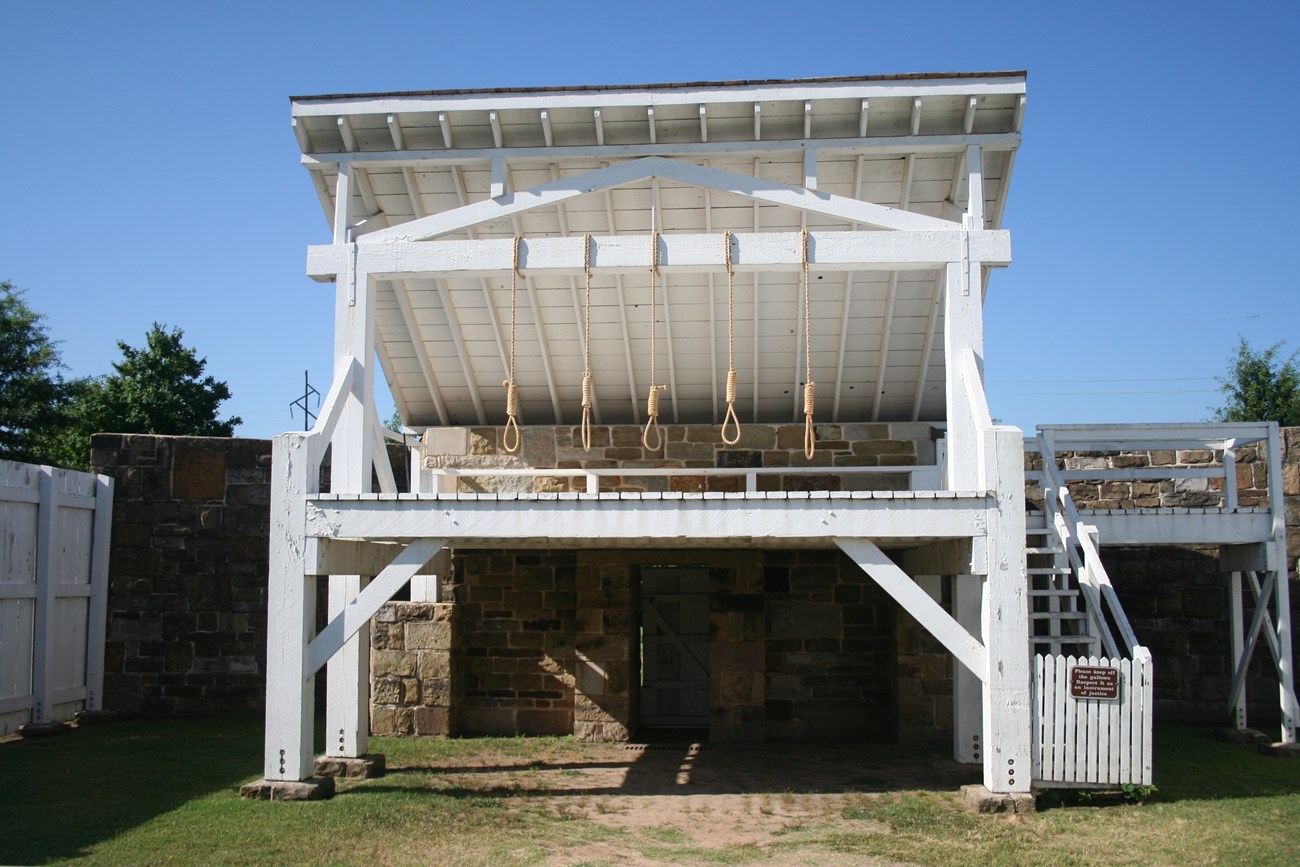|
The Gallows This reproduction of the 1886 gallows is a reminder of the chaotic social conditions that existed in the Indian Territory during Judge Parker's time. The original gallows was designed to hang as many as six condemned criminals at a time. It stood by the wall surrounding the fort about 150 yards south of the courtroom. The third and largest of the federal court's gallows was constructed on this site in 1886. From 1875-1896 Judge Parker heard more than 13,000 cases, of which more than 12,000 were criminal in nature. Of these, 344 involved the capital offences of rape and murder, for which United States law demanded the death penalty upon conviction, and 160 were sentenced to hang. Just over half received a reprieve from execution by hanging through pardons, commutations, reversals or acquittals on appeal, or death in jail. With the largest criminal jurisdiction of any federal court at that time, the Western District of Arkansas handled an extraordinary number of murder and rape cases. When a jury found defendants guilty in these capital cases, federal law mandated the death penalty. Only 79 were hanged, but these were cited as proof of Parker's severity by his critics. Few critics, however, took notice of the tremendous case load of the court or of te savage nature of the crimes committed. In Fort Smith, that meant an execution by hanging on a “crude and unsightly” gallows. A visitor to the city in 1893 recommended a new gallows to evoke the “sacredness and majesty of the law.” This was never achieved and a year after the last execution, the city of Fort Smith destroyed the gallows structure. Find extensive information on the history of the Gallows here. 
NPS |
Last updated: May 12, 2020
